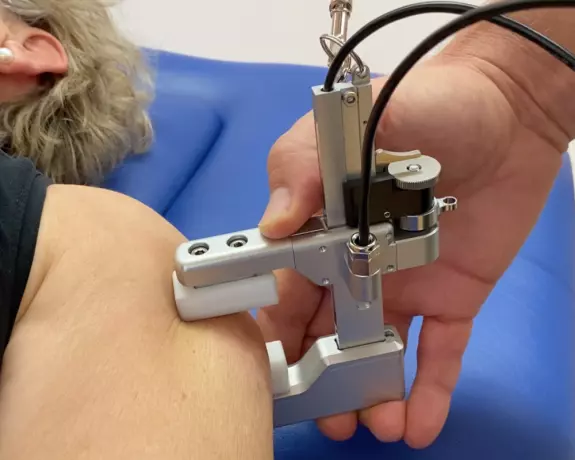
Cibionic® - diagnosis & treatment instrument...
Sustainable therapy results in the shortest possible time - world first Cibionic® With the Ci...
Portal and digital medical technology fair of the largest MedTech cluster in Germany

Cibionic® - diagnosis & treatment instrument...
Sustainable therapy results in the shortest possible time - world first Cibionic® With the Ci...

Generally, health care providers are trained to provide rehabilitation services, but in many cases, this is not the case. As a result, patients often need to go to multiple locations to receive services. This can be expensive. In addition, there are risks of inappropriate interventions, so many hospitals have merged their rehabilitation services. Fortunately, there are options available that can help reduce the cost of rehabilitation and increase patient participation. The Rehabilitation systems package addresses these challenges by providing a wide range of services for all levels of care.
PAMAP is a PC-based platform that evaluates repetitive limb exercises for stroke patients. Its user-friendly interface allows therapists to customize tasks based on the patient's ability to perform them. The system also collects and stores statistics, so the therapist can make an objective evaluation of the patient's progress. It is easy to use and can save clinicians a great deal of time. This helps make rehabilitation more efficient, and improve the overall quality of life for both patients and healthcare providers.
The PAMAP system monitors and evaluates repetitive limb exercises that are prescribed to stroke patients. The device assesses each movement's accuracy, range, and amplitude. It provides graphical assistance to the patient when they perform an incorrect movement. The data is saved in the patient's electronic health record, and the rehabilitation specialist can remotely monitor the patient's progress. This system is designed to help the patients engage in rehabilitation, and to be fun and challenging.
A new innovative technology is enabling the treatment of individuals with disabilities by allowing them to participate in virtual reality games during rehabilitation. A recent study by Costa et al. showed that the PHAROS robot is able to encourage patients to stay active during rehabilitation by providing video games. The robotic platform uses high-precision sensors to assess the user's movements, and it adjusts the intensity of their exercises according to their performance. A web application is available for the patient to follow their progress.
Exoskeletons are complex robotic structures that could help individuals with disabilities walk again. Some of these systems have been developed by companies like Primus and Eccentron. The RS dynamometer, or primus, analyzes the movement patterns of the patient to identify the most effective exercises. The Eccentron, a high-precision sensor-based treadmill, is an essential part of rehabilitation and performance enhancement. Moreover, the Eccentron is a powerful virtual reality tool that can monitor the patient's progress.
One of the most effective rehabilitation systems is a VR rehabilitation system that simulates real-life challenges. The SaeboVR VR system uses a Microsoft Kinect sensor to track the movement of a patient's arms and legs and has four different islands that each contain two to three activities. Each island should be completed four times to maximize the effectiveness of the VR therapy. This type of treatment is aimed at those with physical impairments.
Become a digital exhibitor yourself in the online portal of the largest and best-known MedTech cluster region in Germany and inform the world of medical technology about your products and services as well as about news, events and career opportunities.
With an attractive online profile, we will help you to present yourself professionally on our portal as well as on Google and on social media.